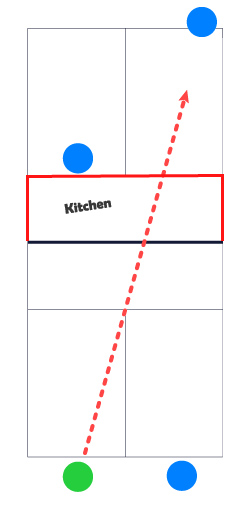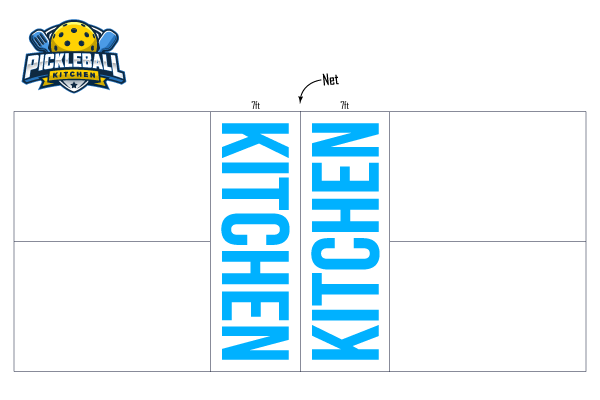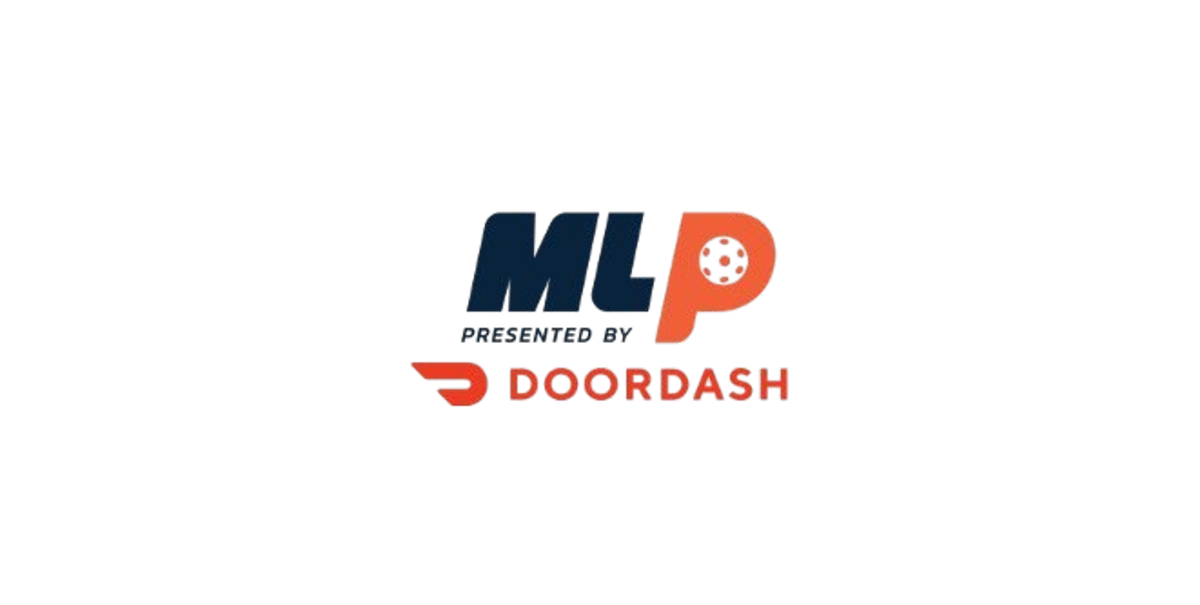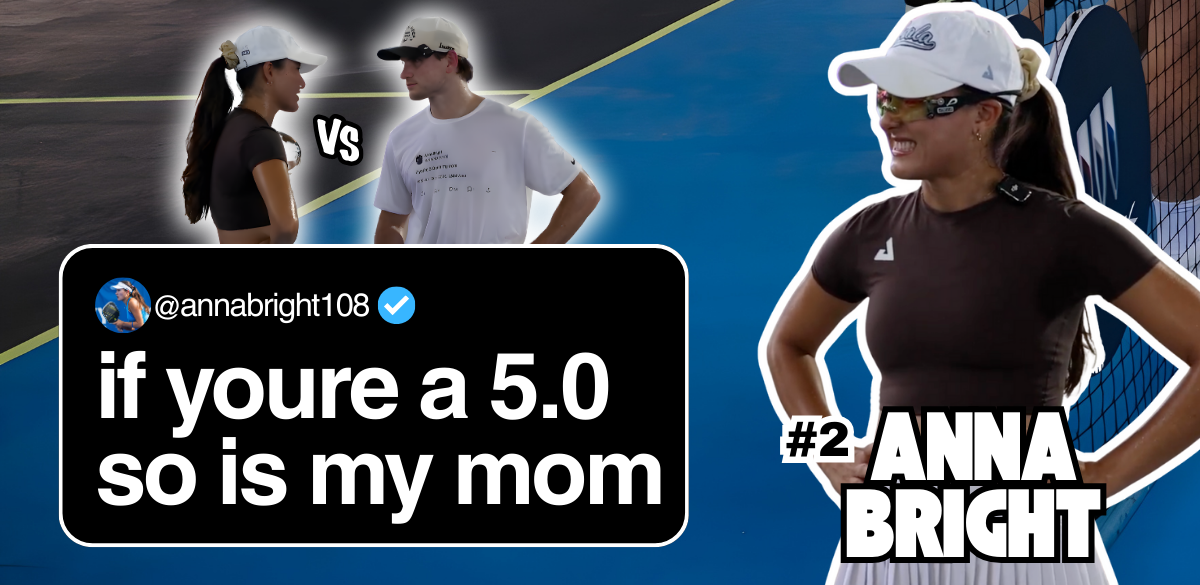The rules of pickleball are important to understand if you want to play the sport well. As you’d expect, pickleball rules are very similar to other racket sports like tennis. Hitting into the net or not letting the ball bounce twice are standard rules that they share. But pickleball has some unique rules that you only see in our sport.
The International Federation of Pickleball (IFP) is the group that governs pickleball rules. It’s prudent to own a copy of the IFP rulebook for your reference. I’ll be showing snippets of it in this article, but it’s always nice to have a physical or digital copy on hand. You can go to this website to download a copy.
I won’t be giving you every single rule in pickleball. I will only be giving you the ones that you need to know and a little extra at the bottom of the article. An understanding of these rules is all you need to get started playing pickleball.
We’ll start with the basics first, move into the beginning of a point then onward to the end. At the end of the article, you’ll know all the important rules so that you can get started playing pickleball. I’ll also include some extra rules that are interesting to know but don’t pop up very often. These rules are more important to know if you’re going to be playing pickleball competitively.
OK, enough chatting, let’s rock!
Let’s start with the basics
Here’s the thing about pickleball. It’s super easy to learn and even easier to play. But it’s also very difficult to master. Pickleball is a beautiful combination of ease of play and extreme complication. But before we get into the actual rules, I want to give you a basic rundown of how these types of sports work just in case you’re completely new.
If you’re already familiar with racket sports, you can safely skip this section.
How racket sports work
Racket sports are a bit different than most types of sports. They typically involve these elements:
- You play on flat ground that is typically a tennis court type material.
- You hit a ball with a paddle or racket of some sort
- There is a net that you have to hit over
That’s pretty much the gist of racket sports. Pickleball is one of the sports and the newest of the bunch.
A few pickleball terms
I first want to explain what a “point” is in pickleball because I will be using it a lot in this article. If you want to learn more terms I wrote a more in-depth article about them.
A game or match of pickleball lasts until one team reaches 11 points. In competitive play, matches will sometimes last for 15 points. A “point” in pickleball is a section of the match that lasts from when the serve is made until either team wins the point.
A point can end either because the ball bounced more than twice or because either team made a fault. A fault is just the racket sports version of a foul, flag, or penalty. It symbolizes that a rule has been broken and the point is over.
The beginning of a point
There’s one rule in particular that governs how a game begins. And that is which players serves first. Whether the match is just beginning or your team is starting its first serve, the player on the right side of the court will always serve first. If you win the point, the serving team is awarded a point, and the partners switch places.
Let’s talk about some more rules that happen at the beginning of a point.
Basic scoring rules
The first thing we’ll go over is scoring. I won’t explain how scoring works in this article, but we’ll go over some rules that govern it.
As I mentioned earlier, most pickleball games go to 11 points. But you don’t just go to 11 points and then win automatically. You also have to win by a margin of 2 points. This means that if the opposing team has 10 points and you’ve just scored your 11th point, then you have to keep playing because you haven’t won by 2 points yet!
The game continues indefinitely until ether team wins by 2 points. That’s how you win in pickleball.
The Double Bounce Rule
Besides the kitchen rules, this is one of the most important rules to understand when you’re a beginner. Trust me though, once you get used to this rule, it will become second nature to you, and you’ll never break it again.
The Double Bounce Rule states that the ball has to bounce once on the serve and again on the return serve. From the IFP rulebook:
“4.H. The serve, and the service return must be allowed to bounce before striking the ball. That is, each side must play a groundstroke on the first shot following the serve. After the initial groundstrokes have been made, play may include volleys.”
Just to clarify, a groundstroke is where you hit the ball after it has bounced on the ground. A volley is where you hit the ball out of the air before it has bounced.
The Double Bounce rule says that you can’t volley on the first two shots after the serve has commenced. When the server hits the ball, it has to be returned as a groundstroke (the ball has to bounce). Then, when the serving team hits the ball back, they also have to hit a groundstroke. The reason why this rule exists is so that you can’t just stand at the net and smash the ball. The game would be impossible to play without this rule.
Keep in mind that the bounce requirement does not include the ball bouncing on the net. It only counts if it bounces on the actual court floor.
Serving rules
Similar to other racket sports, a pickleball point gets started when one player serves to the other side of the court. There are a lot of serving rules in pickleball, and I’ll need to go over almost all of them. They’re very simple though. Most of the rules just govern where you can serve, how you serve and where you have to stand.
Serves are always made cross-court. Like this:

If your serve successfully makes it over to the opponent’s service court (the big rectangle) without hitting the net, then the serve is good. We’ll talk more about some specific rules about this later.
Serving motion rules
There are a few rules that govern how serves have to be made in pickleball.
All serves in pickleball have to be made underhanded. There is no overhead serving as you see in tennis. Here’s what the IFP rulebook says about serving:
“4.A. Serve Motion. The serve must be made with an underhand stroke so that contact with the ball is made below waist level (waist is defined as the navel level).”
To make this kind of stroke work, your arm has to be moving upward, just like how you would pitch in softball or something similar. When you think about serving in pickleball, just think underhanded.
As the rule above also states, you must strike the ball below waist level. This rule is very easy to follow and is almost never broken. Realistically, you have to be trying your hardest to break this rule. Keep in mind that the rule specifically states waist level which is where your navel (belly button) is. This is different than the hip level which is a few inches below your waist.
Server positioning
There are rules affecting where players can stand and plant their feet while serving. Server positioning rules are easy to follow and become second nature once you get used to them.
The easiest way to remember where to stand when you serve is to pretend like you’re surrounded by three imaginary walls. Here’s what they look like.

There are three lines that you cannot cross when you serve. The baseline, the sideline, and the centerline. The baseline is the line that’s right in front of you. The centerline is the one that’s always in the middle no matter what side you’re serving from. And finally, the sideline is the one on the side of the court.
Your feet always have to remain inside these three lines and the imaginary extensions of them. This is why I have those red arrows drawn out in the image above.
The serve itself
OK, let’s talk about the serve shot itself.
Like I mentioned earlier, the ball has to be served cross-court and must clear the net. Also, the serve can never bounce on the ground before you hit it. But there are some more requirements for a serve to be good.
The serve must never land in the non-volley zone (kitchen), even if it hits the net beforehand. If it does, it’s an automatic fault, and you lose the point or serve. But it’s also a fault if it hits one of the kitchen lines. This can be the kitchen line itself or any of the side kitchen lines. Check out this image:

As you can see, the serve can never hit the kitchen or its court lines. However, a serve is considered good if it hits the sideline, centerline, or baseline that is not a kitchen line. Now check out this updated image.

The green lines are the ones you can hit, but the red lines are the ones you can’t. Any serve landing outside the green lines is a fault. If this doesn’t make sense now, it will once you start playing. Just always keep this in mind. Never serve into the kitchen!
Serving lets
OK, here’s where things get interesting and a bit more complicated.
You may have heard of a “let” in tennis or another racket sport. A “let” is a fancy word for a do-over. It’s basically where a soft rule was broken, but they’ll let you retry the serve. Lets are called only on serves.
The most common type of let that you’ll see is where the ball hits the net, then bounces over into the service quadrant. The ball is otherwise good, but since it hit the net, the referee or players call “net” and the server retries. There is no limit the number of lets a server gets.
The referee can also call a let if there has been a distraction near the court or if an object lands in the court during a serve.
The key aspect to remember with serving is that it’s not a let if you serve, hit the net and the ball bounces into the kitchen or hits a kitchen line. That’s a fault instead of a let.
More serving faults
There are a bunch of serving faults to go over so let me just give you a list of them to remember.
- If you miss the ball entirely when trying to serve
- If the served ball hits you or your partner or anything they’re wearing
- If the ball touches any permanent object before landing like a basketball hoop or wall decoration.
That covers it for serving. Some of the most common serving faults involve serving the ball outside of the opponent’s service court and serving into the net. Don’t worry; it happens to everyone. The important rules to avoid breaking are the ones that are simple like stepping over the baseline. But as I mentioned earlier, the more you play, the easier these rules are to deal with.
Rules during a pickleball point
Once the serve has been made, the teams can begin playing out the point. Assuming that the double bounce rule hasn’t been broken, the teams are now allowed to volley the ball. Like I said earlier, a volley is where you hit the ball in mid-air before it had a chance to hit the ground. Vollies are powerful shots that are fun to make.
The problem with volleys though is that there is one section of the court that prohibits the use of volleys: the kitchen.
The kitchen rules
The kitchen is a colloquial term for the non-volley zone. As the name suggests, this is an area of the court where no volleys are allowed. I showed it off above, but here’s another picture of the kitchen.

As you can see, the kitchen extends 7 feet from the net, and from sideline to sideline. The kitchen rules are the most notorious rules in pickleball and are unique to the sport. It’s important to know these rules like the back of your hand.
Here’s the most important concept to understand about the kitchen. You cannot volley a ball and be standing in the kitchen or on a kitchen line whether the momentum of the volley took you into the kitchen or if you hopped out of the kitchen to volley a ball.
Here’s what the IFP rulebook says about the kitchen.
“9.B. A fault will be declared if, in the act of volleying the ball, a player or anything the player is wearing or carrying touches the non-volley zone or touches any non-volley line. For example, a fault will be declared if, in the act of volleying the ball, one of the player’s feet touches a non-volley line.”
In general, you cannot be standing in the kitchen and volley a ball at the same time. But an important part of this is that the kitchen is the physical ground, not the air above it. This means that you can safely volley a ball if your paddle is above the kitchen as long as your foot is not in the kitchen or on the kitchen line.
This is also why when you watch advanced players play, they all seem to be standing just a few inches away from the kitchen line. This allows you to be as close as possible without actually going in the kitchen.
And yes, the rule does include anything you’re wearing. If your hat falls into the kitchen after you volleyed a ball, it’s a fault! This part of the rule is commonly broken when someone volleyed a ball then quickly loses balance. To not fall into the kitchen they will stick their paddle out and prop themselves up. But if their paddle touches the kitchen, guess what? Fault!
Momentum and intention
As I alluded to above, it’s considered a fault if your momentum makes you fall into the kitchen, even if your feet were outside the kitchen during the strike. Let’s see what the IFP rulebook dictates.
“9.C. A fault will be declared if, in the act of volleying the ball, the player’s momentum causes the player or anything the player is wearing or carrying to touch the non-volley zone or touch any non-volley line. It is a fault if the player’s momentum causes the player to touch anything that is touching the non-volley zone, including the player’s partner. It is a fault even if the ball is declared dead before the player touches the nonvolley zone.”
They’re serious about these kitchen rules, aren’t they? Yes, if the momentum that was caused after you volleyed the ball made you step into the kitchen then that is also a fault.
The way you avoid breaking this rule is to just never touch the kitchen even if you won the point with a volley. Just stay away from the kitchen if you’re volleying balls.
There’s one more kitchen rule that we have to go over. It’s all about intention. It’s a fault if you’re in the kitchen and you jump up to volley the ball and land outside the kitchen. This is breaking the intention of what the kitchen rule is designed to protect again which is people standing at the net smashing the ball. Keep in mind that this does not include side-post smashes. It’s OK if you jump from one area to another and volley a ball. But this is only OK if your feet were never in and did not ever touch the kitchen or kitchen line.
I wrote a deeper article about the kitchen rules here if you want to read more about it.
Other rules that you should know
We’re done with all of the main rules of pickleball, but I wanted to include some extra ones. The reason why I’m including these is that you’ll need to know these in case you play serious and competitive pickleball.
10-second rule
This is a neat little rule that involves serving. From the time the referee calls out the score, you will have 10 seconds to serve the ball or be ready to receive the serve. This rule works on both sides of the net. If you don’t serve within that timeframe, then it’s a fault, and you will lose your serve.
This is crucial to know because if you need to mess with your shoe or something similar, then you will need to take a timeout. Don’t risk it.
As I said, this also works on the other side of the court. If you’re receiving the serve, you can’t just lollygag around and expect there not to be consequences. You have 10 seconds to get ready for the serve. If you’re not ready, the referee will award a point to the serving team.
The reason why this rule exists is so that people don’t re-energize themselves after a hard-fought or long rally. This rules makes sure that the game continues at a normal pace and doesn’t take forever.
Touching the net
You can never physically touch the net with your body or anything you’re wearing. To do so will incur a fault. It doesn’t matter if it was just your shirt whipping a side post or something like that. It will be a fault no matter what. Just pretend it’s an electric fence and you’ll never go near it!
Distraction rules
I’m glad that there are rules like this in pickleball. I could never imagine someone intentionally doing this, but you can’t distract your opponent before they hit a shot. Stomping your feet or yelling at your opponent before they hit will be a fault on you.
However, this also includes if you were yelling at your partner. You could be communicating loudly to your partner and doing so while your opponent is swinging. If they mess up the referee could call a distraction fault on you. It’s OK to communicate to your partner, but make sure it’s not too loud.
Double hits
It’s always hilarious when someone accidentally hits the ball twice. Of course, you can’t hit the ball twice regularly, but you can sometimes. The rule states that if you hit the ball twice with your paddle, it’s legal only if it was a single, continuous stroke. If you pump twice at it then it’s a fault. But as long as it was one stroke, then it’s perfectly legal.
Wrapping up
That wraps up my article about pickleball rules. I know that was long, but once you get a grip on these rules, you’ll be an advanced pickleball player in no time. Thanks for reading and let me know what you think in the comment section!
Sources: IFP Rulebook – http://ifpickleball.org/
Anuncie Aqui / Advertise Here
Sua marca para o mundo Pickleball! / Your brand for the Pickleball world!

 English
English  Spanish
Spanish  Portuguese
Portuguese  German
German  Italian
Italian  Japanese
Japanese  French
French  Polish
Polish  Russian
Russian  Netherlands
Netherlands  Hungarian
Hungarian  Turkish
Turkish  Videos
Videos  Pickleball Kitchen
Pickleball Kitchen








 English (US) ·
English (US) ·  Portuguese (BR) ·
Portuguese (BR) ·